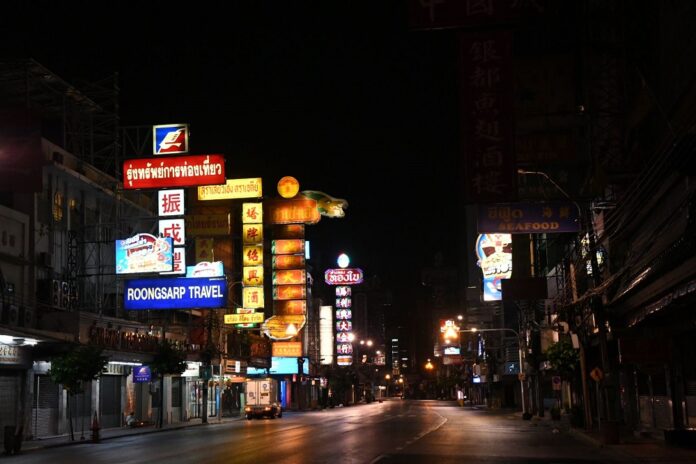
Monitoring daily government press conferences and its latest coronavirus figures has become a daily ritual for many Thais as they enter a nationwide lockdown in April.
How many more have been infected today? Any new fatalities? How many are in critical condition? And which cluster are the newly infected from?
Also, people compare the figures to other nations. The US is reigning supreme for the wrong figures again when it comes to infection figures, while some think China is grossly underreporting its numbers.
Then there’s the projected numbers for Thailand. Last month, a group of senior Thai medical professors projected that if Thailand doesn’t take social distancing seriously, the kingdom could see as many as 350,000 people infected by mid-April. That’s less than two weeks from now.
On the other hand, you have a projection of 25,000 infections for mid-April made public by the Department of Communicable Disease Control.
On Wednesday, the Public Health Ministry published a survey where 18 percent of respondents are “highly worried” about the virus while about 5 percent are “little concerned.”
With around 2,100 officially infected and 23 deaths as of press time, a rough average of 100 plus new infections each day, curfews and more lockdown measures in place, my hunch is Thailand is not going to see more than 25,000 infections by mid of April. We definitely won’t see 350,000 being infected in the next 10 days, so that’s one good news already.
With all the figures and projections, we also learned that 23 million Thais in the informal sector not covered by social security welfare applied for the government’s 5,000 baht per month cash alleviation. The monthly sum will be paid for three months although the government said on Wednesday that it looks like only 12 million applicants were eligible.
With all these figures available, I wonder about the homeless people in Bangkok. What has the government done to assist and protect the estimated 3,000 to 4,000 homeless people in Bangkok to protect them from being infected? How can the homeless stay home during the lockdown when they do not have home? How many street food vendors in Bangkok and beyond are hard hit by the ban on onsite eating?
What about the number of prisoners at risk due to the very crowded detention facilities?
And how many will become unemployed, temporarily or otherwise? How many more will face the fate in the coming weeks and months? How long can Thailand afford a lockdown before its economy, now projected to shrink by over 5 percent is in ruins and poor people starve, dig deeper into debt, and commit suicide?
In Thailand, it’s death by coronavirus or economic ruin, particularly for the poor.
In the end, we cannot just focus on infections and deaths figures, it must be balanced with stats and figures of economic impact.
Many Thais cannot afford to live a life of self-quarantine or self-isolation bliss for a long period as they lead a hand-to-mouth existence. These people cannot afford an air-conditioned environment to work at home and their urban homes are often very small and crowded flats with no Netflix to watch or Chao Phraya river views. Self-isolation is a luxury that poor people cannot afford.
On Tuesday, Prime Minister Gen Prayut Chan-o-cha threatened to stop all public transport services if the figures don’t drop to a satisfactory number, thus putting the urban poor at even greater disadvantages.
Increasingly, they faced either death from coronavirus infections or death from economic crises. This is where both the government and the public must bear in mind and seek a balance before it’s too late.
In this time of daily figures and forecasts, let us not forget the human faces behind the numbers as well. After all, humans are not just numbers.











































